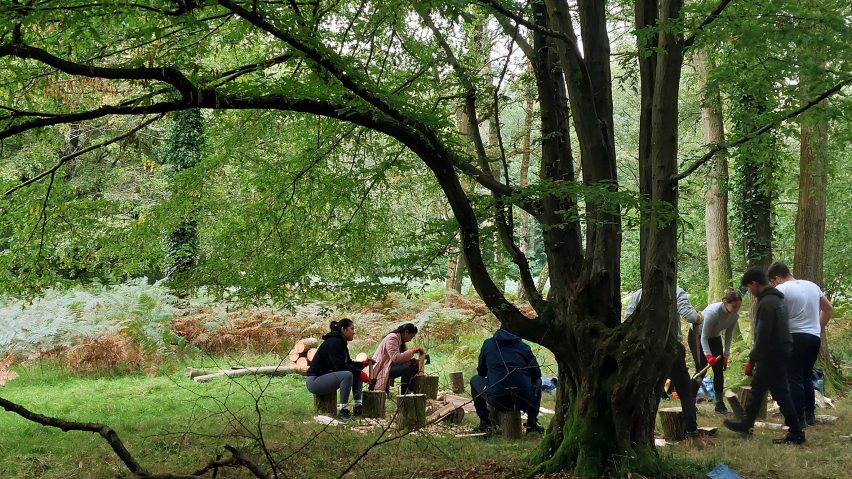
Studio Bark devises structural use for waste timber in English woodlands
British architecture practice Studio Bark has worked with students from the University of East London to devise a roof-supporting column with otherwise unusable timber at a site within ancient English woodland.
Named Spindles, the project, which borrowed techniques from local chair making traditions, involved using small pieces of shaped wood to make a roof-supporting column.
The most important aspect of the project, Studio Bark architect Ella Thorns explained to Dezeen, was the approach the practice took to thinking about timber and responding to the particular ecological conditions of a site.
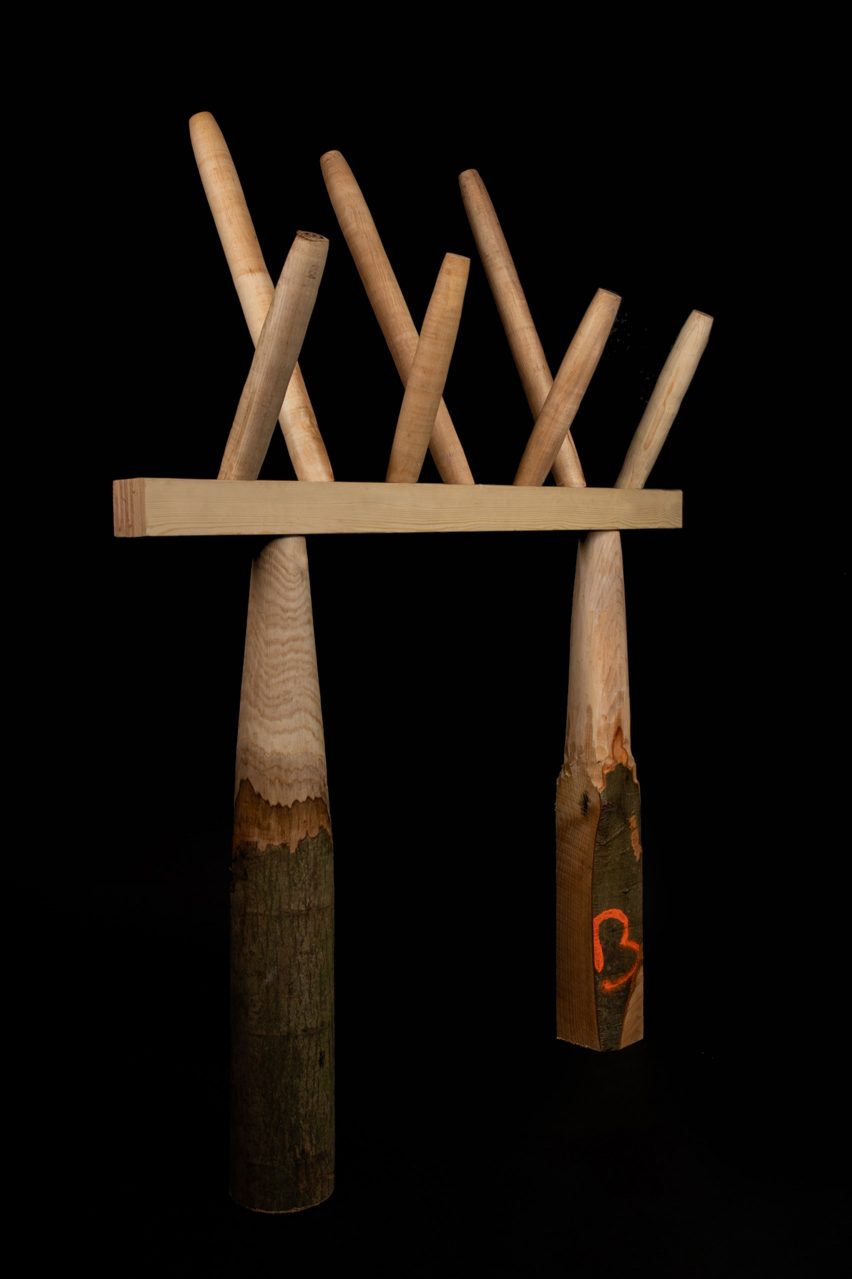
Spindles began when the studio was hired to build a family home on a site within an overgrown plantation on ancient woodland in Buckinghamshire in the southeast of England.
"We immediately realised that the woodland was in quite bad condition to someone who knows what that looks like – which I didn't at first, but you can tell very quickly from looking at the floor of a forest, and there was just no growth happening at all," said Thorns. "It was very dead."
"We were there in midsummer. You should have this flourishing understory of shrubs and plants and things and there was just nothing, and a lot of the trees are very tall and spindly."
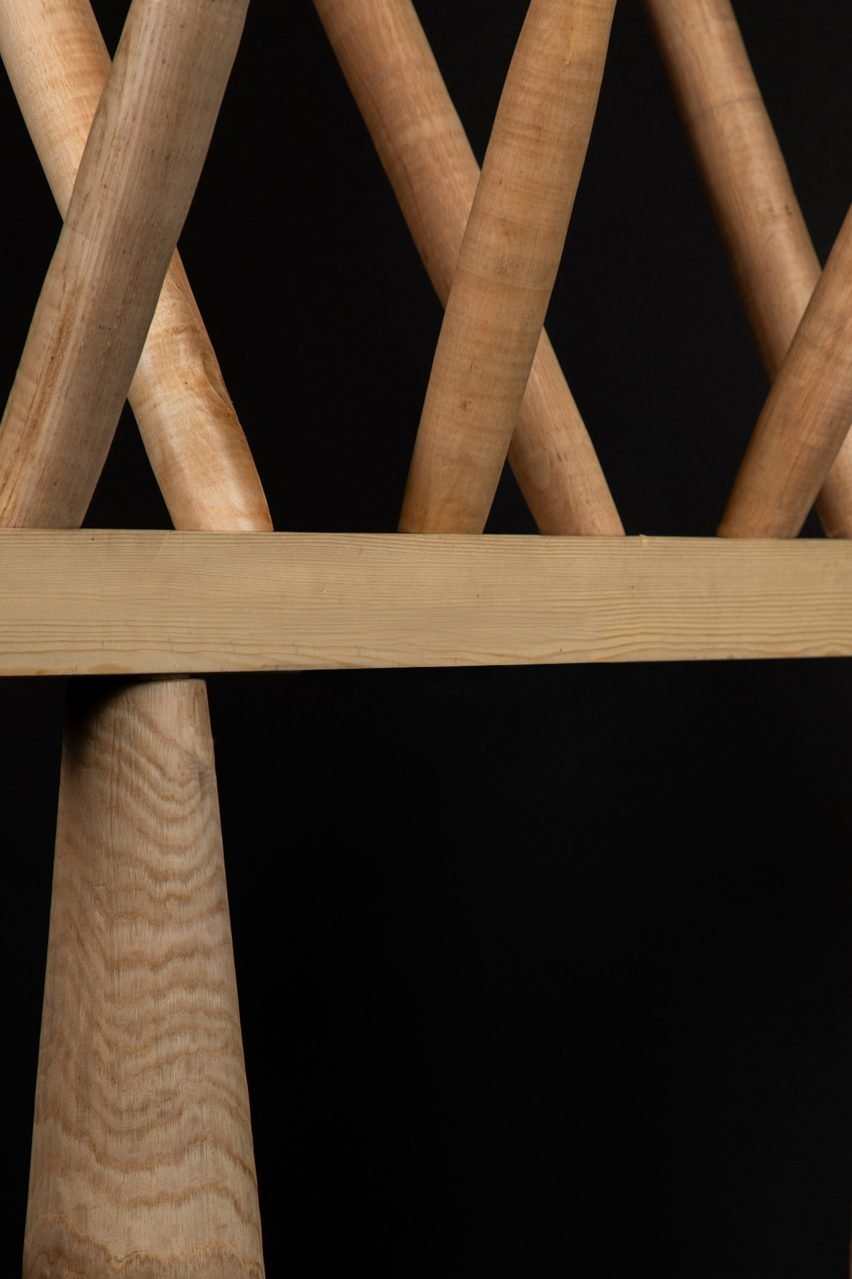
Working with advice from timber and forestry consultancy Evolving Forests, which developed a woodland management strategy for the site, they learned that they would need to cut down some trees – particularly dominant, non-native species – in order to rehabilitate the natural environment.
That posed the question of what to do with the felled trees. The studio wanted to use them, but these were not the sorts of trees that would be ordinarily accepted by sawmills and turned into construction timber – they were too small and irregularly shaped.
It got the studio thinking about timber and sustainability, and how although timber is usually assumed to be a green building material, it's not without its problems.
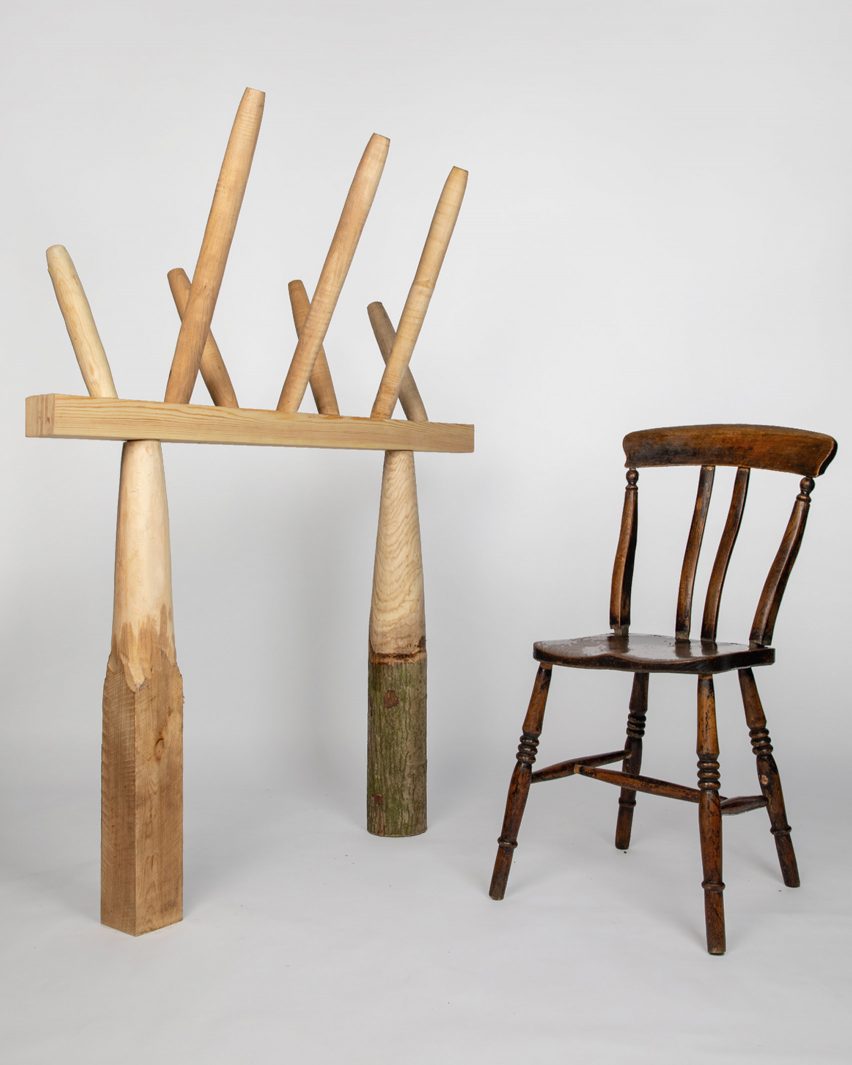
"In the UK, we don't have anywhere near enough timber that we need for current demand," said Thorns. "So we then questioned, can we use this timber, which is very much not the sort of stuff you buy on the shelf."
Usually, this "rejected" timber would be sold for firewood or left to decay, but that would release the carbon dioxide the tree had sequestered in its life, and Studio Bark wanted to avoid that outcome.
They found inspiration in the area's cultural heritage. Buckinghamshire is the historical centre of production for the Windsor chair, and the spindles of its backrest represent a very efficient way of using small pieces of wood.
This is because you can use a smaller piece of timber if you're going to cut a circular cross-section rather than a square one of the overall same area and strength. This is "an old technique", said Thorns, but one that opens up a lot of opportunities to use smaller trees.
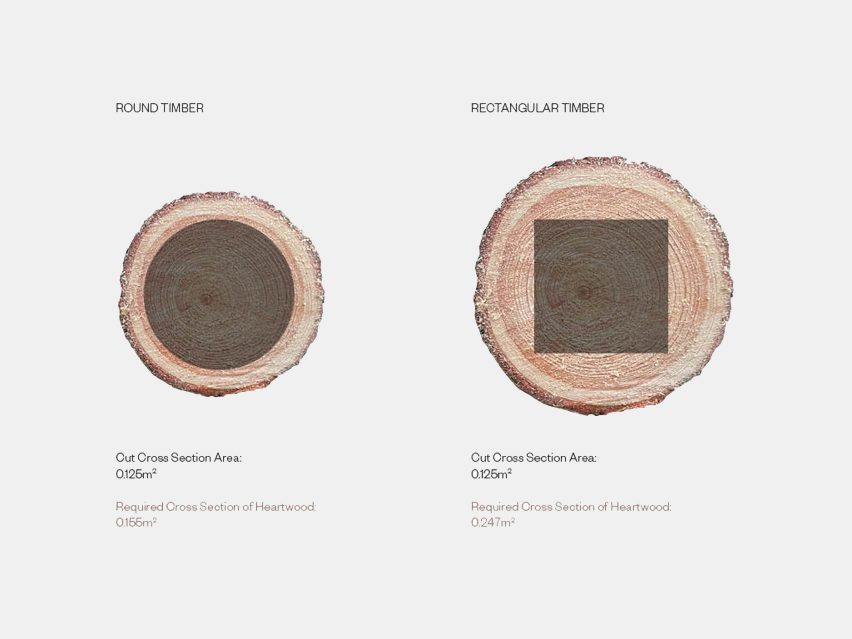
The round wood lengths complement the tree's natural growth pattern where the rings grow around any defects, she explained, and result in less wastage. The spindle shape — fatter in the middle, thinner in the ends — is also useful.
"If you were to draw a force diagram, you'd need more material in the middle, so naturally it's a win-win," she said.
The studio worked with craftsperson and tree surgeon Ben Harris as well as masters students from the University of East London's School of Architecture, who were on an annual "construction fortnight", to cut wood using an electric lathe on site.
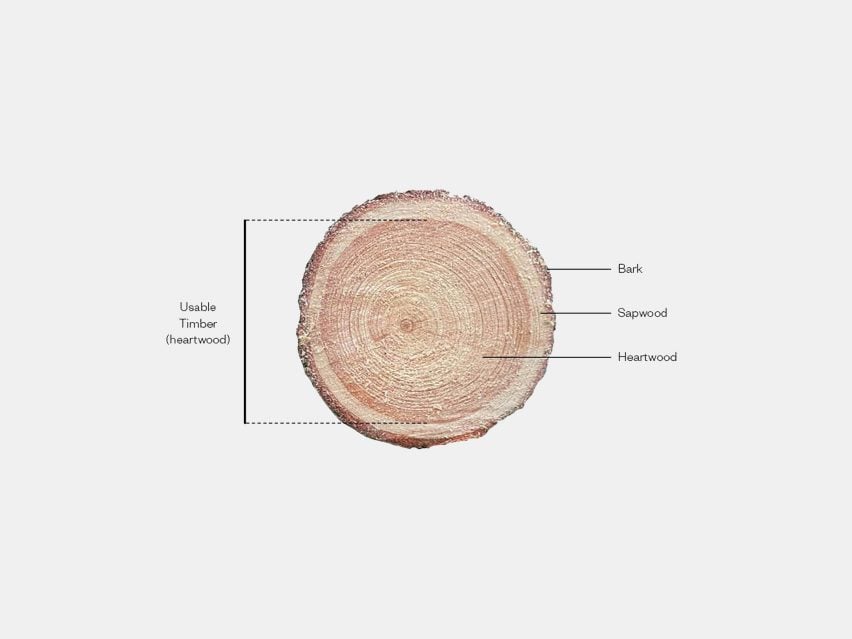
They then worked with structural engineer Structure Workshop to develop a plan for how to use the small sections of wood in an architectural context, envisioning them as pieces of a larger column. They also built a 1:3 structural model of a possible spindle application, consisting of columns of wood connected by a glulam beam, with spindles emerging from the beam to support a roof.
Thorns said that the impact of the Spindles project was "wider than the actual design" and more about a "methodology of thinking" around timber that considered "not just the carbon metric but also the biodiversity and social metric".
"We need to look to alternative sources and design buildings that make timber go a lot further," she said. "The Spindles project does just this, increasing the conversion rate of tree to useable timber and working with homegrown timber that is usually overlooked."
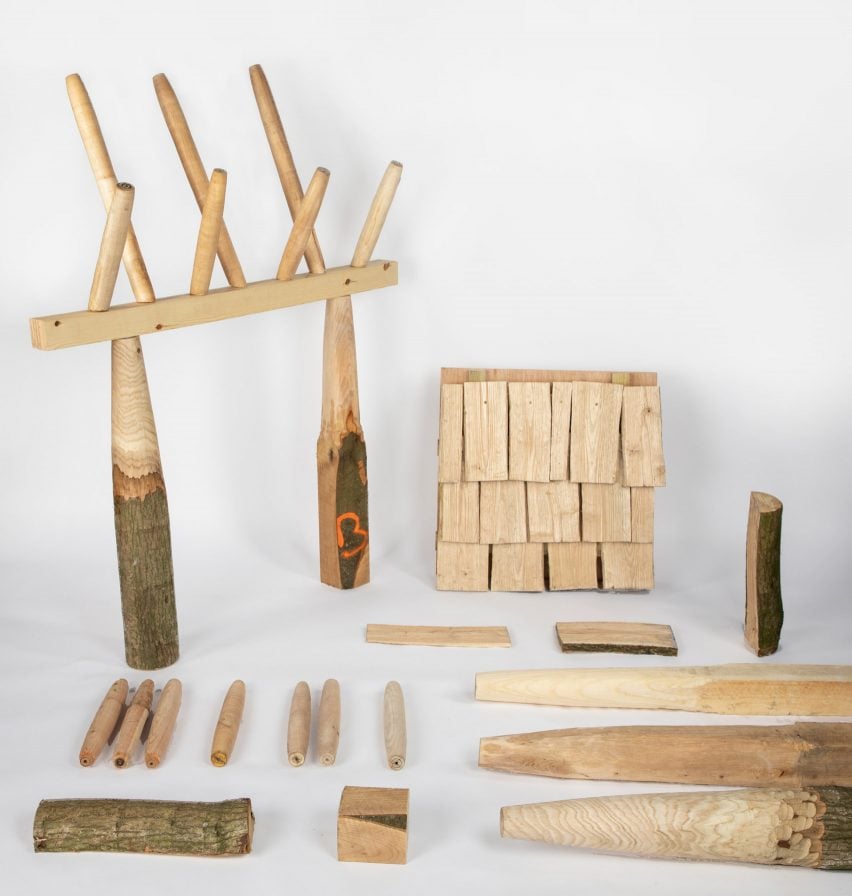
Studio Bark has not yet designed the farmhouse for the site but intends to use its trees for both structural and cladding elements such as shingles or shakes. It also hopes to make bespoke furniture with local students.
Studio Bark is a London-based practice that focuses on socially conscious projects. Its recent work has included a low-impact demountable timber house in rural England and a self-build modular construction system that has been used by Extinction Rebellion as "protest architecture".
Photography is by Millie Naylor and Shannon Childs.
Project credits
Concept, design and fabricators: Studio Bark
Craftsman and tree surgeon: Ben Harris, BM Timber
Structural engineer: Structure Workshop
Landscape architects: Studio 31
Timber and forestry consultant: Evolving Forests
Local historian: Robert Bishop, Kraftinwood, Chair Making Museum
Collaborator: Alan Chandler, co-director Sustainability Research Institute, UEL
Collaborator: Armor Gutierrez Rivas, senior lecturer in Architecture, UEL
Collaborator: Daryl Brown, UEL Timber Workshop
Collaborator: David Morgan, UEL Timber Workshop
UEL Master of Architecture Students team: Zakaria Arif, Bahar Bozygit, Talha Jariwala, Junaid Nohur, Alex Saw, Kelly Yamba, Bhairavi Zende